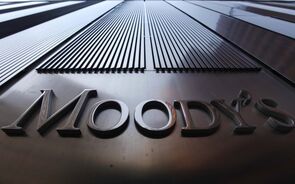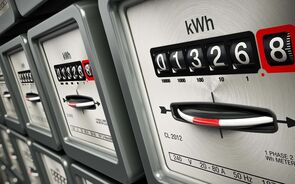Commodity prices have been shooting up.Time to worry again ?
1 Mensagem
|Página 1 de 1
Commodity prices have been shooting up.Time to worry again ?
Testing their metal
Sep 16th 2003
From The Economist Global Agenda
Commodity prices have been shooting up. Time to worry again about inflation?
THE price of steel in Japan is rising. By way of example, H beams, which are the standard unit used in construction, have risen from under ¥30,000 per tonne to about ¥45,000 per tonne over the past four years, according to Jonathan Allum of KBC Financial Products. Scrap prices are going up, too. For a country plagued for so long by deflation, this seems odd, not least because it has been going on for some while: the price of sophisticated manufactured goods continues to fall in Japan, points out Mr Allum, even as the prices of industrial commodities rise.
It is a trend that is not restricted to Japan. For all the mutterings about disinflation and deflation (a word that seems to be said only sotto voce, perhaps out of embarrassment now that growth is picking up almost everywhere), commodity prices have been rising at a fair lick. Is this rise the harbinger of higher inflationary pressures, as in times past? Or, put another way, could steel-traders be forgiven for thinking that Alan Greenspan and his colleagues at the Federal Reserve have fretted unduly about deflation? For his part, Buttonwood does not see the rise in commodity prices fuelling inflation, but it does say something interesting about the shift in global economic growth.
The Economist’s commodity-price index, first published in 1864, which makes it the world’s oldest, has been sprightly of late. The index as a whole has risen by 6% over the past 12 months in dollar terms, but it is the prices of industrial commodities that catch the eye. They have risen by 17% over the same period, and non-food agricultural products have gone up by 21%. Our metals index touched a bottom of 62.2 in October 2001; it now trades at a healthy 76. Though aluminium prices have crawled up by a modest 5% over the past year, platinum has gone up by 26%, copper by 17% and nickel by a scarcely deflationary 40%.
The sharp rise in commodity prices has been driven partly by dollar weakness. Most commodity prices are denominated in dollars, and many of the world’s producers have currencies that have risen against the greenback, sometimes by a lot. The rise in the dollar price reflects, among other things, an attempt to claw back some of the increased cost of selling in that currency. In other currencies, the overall index has risen less; in euros, a currency which has risen, the index has fallen.
But the interesting thing is that producers have managed to pass on these increased costs in dollars. Demand, in other words, is sufficiently robust. For that, thank in part hedge funds and the like, which have piled into the market on the bet that prices will rise as global growth picks up and manufacturers restock. What makes the bet more compelling is that world growth has been shifting to Asian countries, which have been growing much faster than developed countries. China and India, for instance, have been growing by around 7-8% and 5-6% respectively for many years. They are also relatively intense users of commodities. At the beginning of the 1990s, China accounted for 7-8% of the world’s metals consumption. Now, says Paul McTaggart, an analyst at Morgan Stanley, it makes up perhaps a fifth. And Chinese demand is growing by around 10% a year. The effects of swings in that demand on commodity prices are thus greater than they were.
And, to return to those Japanese H beams, this is particularly true of steel. In 1990, China consumed 60-70m tonnes of steel. Now it uses some 250m tonnes a year (around one-sixth of which it imports), out of global consumption of perhaps 930m tonnes. By 2010, it may be consuming 350m tonnes. “You want to be selling the Chinese something they haven’t got,” says Mr McTaggart. That something is not just steel (Japan has some very expensive blast furnaces; China has few and would rather spend the money on something else), but industrial commodities in general. Perhaps counter-intuitively for a country of its size, China is rather short of these; and even when it has them, the infrastructure is decidedly problematic. It takes about as long to get a container from Long Beach, California, to Shanghai as it does to get one from Shanghai to Chongqing, a thousand miles or so up the Yangzi river. Worried about its dependence on foreign producers, the Chinese government is now offering incentives to find and produce commodities. It will, one suspects, be many years before any of this makes a difference. “That’s what’s got people interested in commodities,” says Mr McTaggart, and you can see their point.
And the inflationary impact of all of this? Almost nil. Any economist worth his salt will tell you that inflation is a movement in the overall level of prices. And at this level, China works if anything in the other direction, because thanks to its low-cost labour force it can pump out goods of all kinds a lot more cheaply than just about anyone else (intriguingly, it even has the market for sex aids sewn up). But the rise of commodity prices does say a lot about the extent to which growth has moved east. America gripes about China and its unfair competition; Japan, which runs a trade surplus with the Middle Kingdom, exports its H beams.
Sep 16th 2003
From The Economist Global Agenda
Commodity prices have been shooting up. Time to worry again about inflation?
THE price of steel in Japan is rising. By way of example, H beams, which are the standard unit used in construction, have risen from under ¥30,000 per tonne to about ¥45,000 per tonne over the past four years, according to Jonathan Allum of KBC Financial Products. Scrap prices are going up, too. For a country plagued for so long by deflation, this seems odd, not least because it has been going on for some while: the price of sophisticated manufactured goods continues to fall in Japan, points out Mr Allum, even as the prices of industrial commodities rise.
It is a trend that is not restricted to Japan. For all the mutterings about disinflation and deflation (a word that seems to be said only sotto voce, perhaps out of embarrassment now that growth is picking up almost everywhere), commodity prices have been rising at a fair lick. Is this rise the harbinger of higher inflationary pressures, as in times past? Or, put another way, could steel-traders be forgiven for thinking that Alan Greenspan and his colleagues at the Federal Reserve have fretted unduly about deflation? For his part, Buttonwood does not see the rise in commodity prices fuelling inflation, but it does say something interesting about the shift in global economic growth.
The Economist’s commodity-price index, first published in 1864, which makes it the world’s oldest, has been sprightly of late. The index as a whole has risen by 6% over the past 12 months in dollar terms, but it is the prices of industrial commodities that catch the eye. They have risen by 17% over the same period, and non-food agricultural products have gone up by 21%. Our metals index touched a bottom of 62.2 in October 2001; it now trades at a healthy 76. Though aluminium prices have crawled up by a modest 5% over the past year, platinum has gone up by 26%, copper by 17% and nickel by a scarcely deflationary 40%.
The sharp rise in commodity prices has been driven partly by dollar weakness. Most commodity prices are denominated in dollars, and many of the world’s producers have currencies that have risen against the greenback, sometimes by a lot. The rise in the dollar price reflects, among other things, an attempt to claw back some of the increased cost of selling in that currency. In other currencies, the overall index has risen less; in euros, a currency which has risen, the index has fallen.
But the interesting thing is that producers have managed to pass on these increased costs in dollars. Demand, in other words, is sufficiently robust. For that, thank in part hedge funds and the like, which have piled into the market on the bet that prices will rise as global growth picks up and manufacturers restock. What makes the bet more compelling is that world growth has been shifting to Asian countries, which have been growing much faster than developed countries. China and India, for instance, have been growing by around 7-8% and 5-6% respectively for many years. They are also relatively intense users of commodities. At the beginning of the 1990s, China accounted for 7-8% of the world’s metals consumption. Now, says Paul McTaggart, an analyst at Morgan Stanley, it makes up perhaps a fifth. And Chinese demand is growing by around 10% a year. The effects of swings in that demand on commodity prices are thus greater than they were.
And, to return to those Japanese H beams, this is particularly true of steel. In 1990, China consumed 60-70m tonnes of steel. Now it uses some 250m tonnes a year (around one-sixth of which it imports), out of global consumption of perhaps 930m tonnes. By 2010, it may be consuming 350m tonnes. “You want to be selling the Chinese something they haven’t got,” says Mr McTaggart. That something is not just steel (Japan has some very expensive blast furnaces; China has few and would rather spend the money on something else), but industrial commodities in general. Perhaps counter-intuitively for a country of its size, China is rather short of these; and even when it has them, the infrastructure is decidedly problematic. It takes about as long to get a container from Long Beach, California, to Shanghai as it does to get one from Shanghai to Chongqing, a thousand miles or so up the Yangzi river. Worried about its dependence on foreign producers, the Chinese government is now offering incentives to find and produce commodities. It will, one suspects, be many years before any of this makes a difference. “That’s what’s got people interested in commodities,” says Mr McTaggart, and you can see their point.
And the inflationary impact of all of this? Almost nil. Any economist worth his salt will tell you that inflation is a movement in the overall level of prices. And at this level, China works if anything in the other direction, because thanks to its low-cost labour force it can pump out goods of all kinds a lot more cheaply than just about anyone else (intriguingly, it even has the market for sex aids sewn up). But the rise of commodity prices does say a lot about the extent to which growth has moved east. America gripes about China and its unfair competition; Japan, which runs a trade surplus with the Middle Kingdom, exports its H beams.
Alex
- Mensagens: 119
- Registado: 31/7/2003 17:41
- Localização: Lisboa
1 Mensagem
|Página 1 de 1


